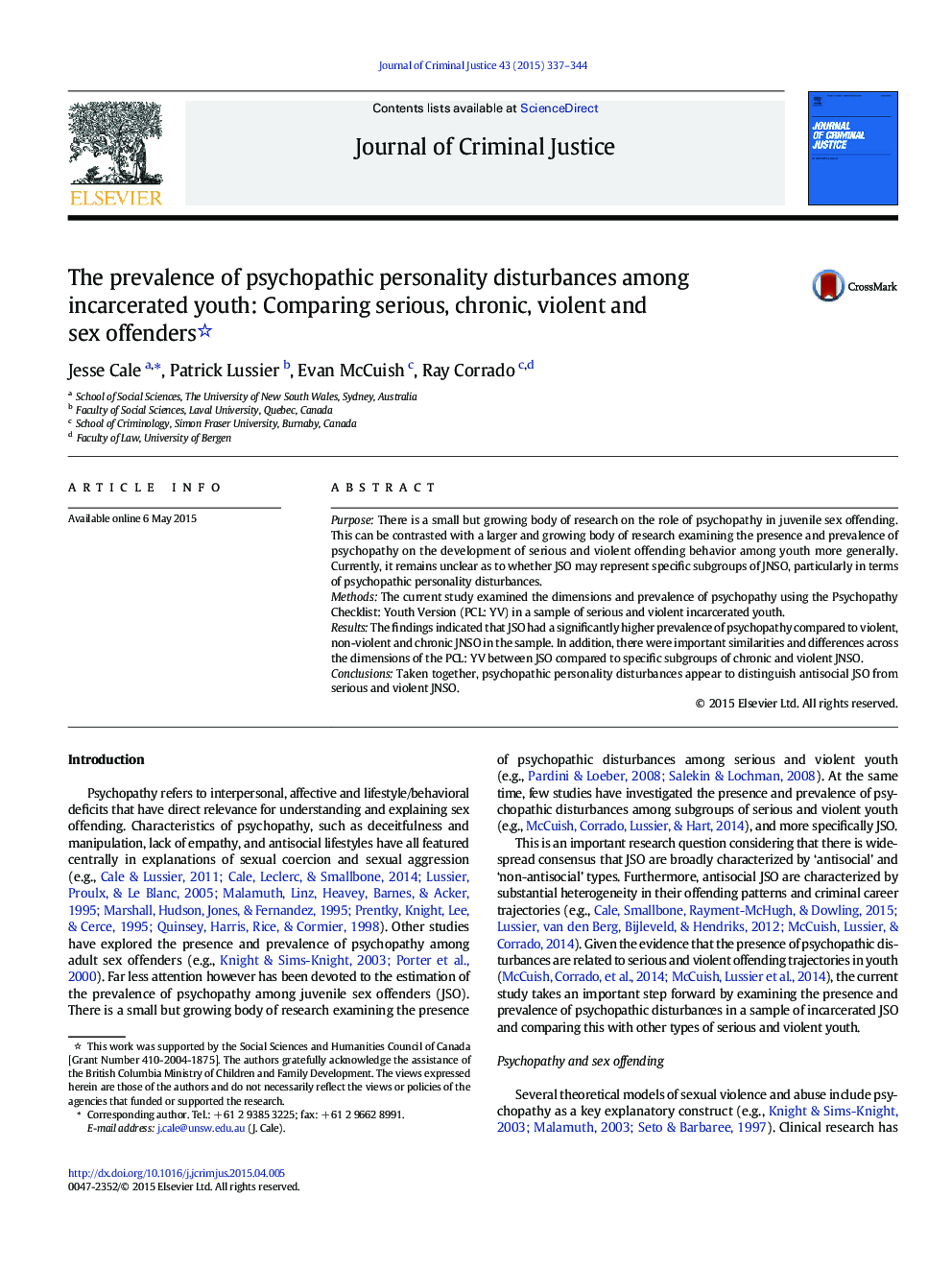| Article ID | Journal | Published Year | Pages | File Type |
|---|---|---|---|---|
| 882736 | Journal of Criminal Justice | 2015 | 8 Pages |
•JSO had a higher prevalence of psychopathy compared to JNSO.•JSO differed from JNSO on interpersonal and affective dimensions of the PCL: YV.•JSO resembled violent JNSO on the affective dimension of the PCL: YV.•Interpersonal styles of JSO differentiated them from violent and chronic offenders.
PurposeThere is a small but growing body of research on the role of psychopathy in juvenile sex offending. This can be contrasted with a larger and growing body of research examining the presence and prevalence of psychopathy on the development of serious and violent offending behavior among youth more generally. Currently, it remains unclear as to whether JSO may represent specific subgroups of JNSO, particularly in terms of psychopathic personality disturbances.MethodsThe current study examined the dimensions and prevalence of psychopathy using the Psychopathy Checklist: Youth Version (PCL: YV) in a sample of serious and violent incarcerated youth.ResultsThe findings indicated that JSO had a significantly higher prevalence of psychopathy compared to violent, non-violent and chronic JNSO in the sample. In addition, there were important similarities and differences across the dimensions of the PCL: YV between JSO compared to specific subgroups of chronic and violent JNSO.ConclusionsTaken together, psychopathic personality disturbances appear to distinguish antisocial JSO from serious and violent JNSO.
